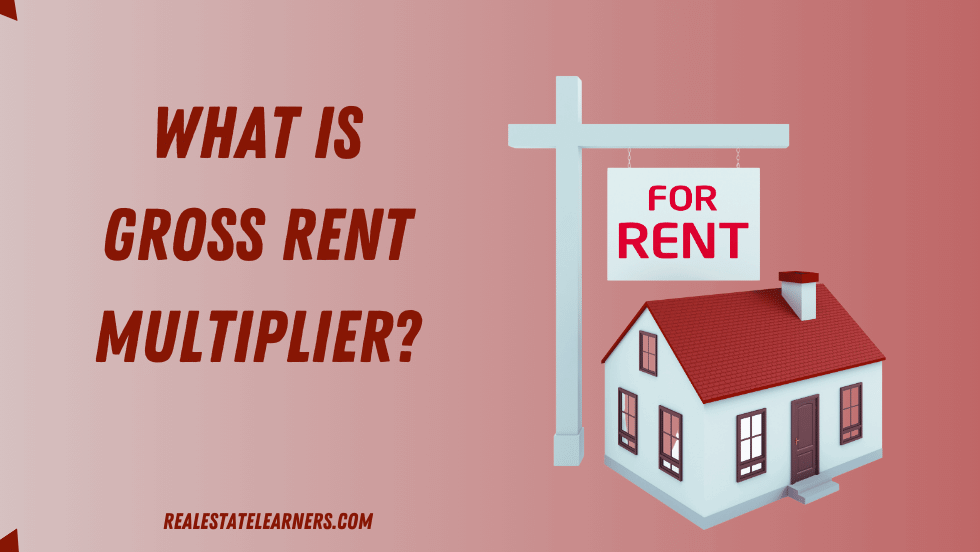The Gross Rent Multiplier is a financial metric used to evaluate the value of an investment property. It is commonly used in real estate investing and can be helpful for buyers and sellers.
In this post, we will explore what Gross Rent Multiplier is, how it is calculated, and how it can be used in practical situations to make knowledgeable decisions about real estate investments.
What is Gross Rent Multiplier?
The Gross Rent Multiplier (GRM) measures the relationship between a property’s purchase price and potential rental income. It is
What is a Gross Rent Multiplier?
Gross Rent Multiplier (GRM)
The Gross Rent Multiplier, or GRM, is a simple and commonly used real estate valuation method. It is used to estimate the value of an income-producing property by calculating the ratio between the property’s sale price and its gross rental income.
How it works
To calculate the GRM, you take the property’s sale price and divide it by the gross annual rental income. The result is a numerical figure representing the years it would take for the property to pay for itself based on its current rental income.
For example, if a property sells for $500,000 and has an annual rental income of $50,000, the GRM would be 10 ($500,000 / $50,000 = 10). This means the property would take 10 yearsto generate sufficiently rental income to cover its purchase price.
Advantages
One of the main advantages of using the GRM method is its simplicity. The calculation only requires two pieces of information – the sale price and gross rental income – which makes it a quick and easy way to get an initial estimate of a property’s value.
Additionally, the GRM can be used for different investment properties, such as single-family homes, multi-family buildings, and commercial properties. This makes it a versatile tool for real estate investors.
Limitations
Although the GRM is a helpful tool for estimating property value, it is essential to note that it is not a comprehensive valuation method. It does not consider other factors, such as operating expenses, vacancy rates, and potential rental increases.
Furthermore, the GRM is based on gross rental income, which does not consider any potential deductions or expenses related to the property. As a result, it may sometimes overestimate a property’s value.
Additional Considerations
While the GRM is a helpful starting point for property valuation, it should not be the only factor considered.It is essential to perform further analysis and consider other factors such as area, market trends, and potential forrental increases.
Additionally, the GRM may vary significantly across different markets and property types. Researching and comparing similar properties in the same area is essential to get a more accurate estimate of the GRM for a specific property.
What is the Good Gross Rent Multiplier for Rental Property?
No specific number can be considered a “good” or “bad” GRM for rental property. The ideal GRM will depend on various factors such as the location, property type, market conditions, and individual investment goals.
Generally, a lower GRM indicates a better deal as it means the property generates more income than its sale price. However, a very low GRM may also show a property with high operating expenses or potential issues that must be carefully evaluated.
Conversely, a higher GRM may be a good deal if it is in an area with high demand and increasing rental rates. Ultimately, the best way to determine a good GRM for rental property is to research and compare similar properties in the exact market and make an informed decision based on personal investment goals.
So, using the GRM as part of a comprehensive property valuation strategy is essential rather than relying solely on this method. Investing in real estate needs careful analysis and consideration of multiple factors for a successful outcome. That said, the Gross Rent Multiplier can be a valuable tool for novice and experienced real estate investors in determining the potential value of income-producing properties.
What is the difference between GRM and GGRM?
Both methods are used to estimate the value of a property, but they differ in their specific applications and calculations.
The GRM is commonly used in real estate to determine the value of income-producing properties based on rental income, while the GGRM is explicitly used for commercial properties.
The GRM calculation only considers the sale price and gross rental income, while the GGRM includes additional factors such as operating expenses, vacancy rates, and potential rental increases.
The result of the GRM is a numerical figure representing the number of years it would take for the property to pay for itself based on its current rental income. At the same time, the GGRM provides a more comprehensive measure of the property’s value.
The GRM is generally used for smaller investment properties, while the GGRM is more suitable for larger commercial properties. This is because the GGRM considers a broader range of factors typically associated with commercial real estate investments.
However, both methods can be helpful tools for real estate investors in determining the potential value of a property. They should be used in conjunction with other valuation methods for a more accurate estimate.
What is the difference between the gross rent multiplier and income approach?
Both methods are used to estimate the value of a property, but they differ in their specific applications and calculations.
The GRM is based on gross rental income and uses a simple calculation of dividing the sale price by the annual rental income. The income approach, on the other hand, considers net operating income (NOI) and uses a more complex calculation to determine the value of a property.
The GRM is commonly used for small investment properties, while the income approach is more suitable for more significant commercial properties. This is because the income approach considers various operating expenses and potential rental increases typically associated with commercial real estate investments.
The GRM provides a quick and easy way to estimate property value, while the income approach offers a more complete and detailed analysis of a property’s potential for generating income.
Furthermore, the GRM is commonly used as an initial estimate or starting point for property valuation, while the income approach is considered a more thorough and accurate method.
Ultimately, both methods have their strengths and limitations, and it is essential to consider various factors and use multiple valuation methods to determine a property’s actual value.
What is a good Grm for rental property?
A good GRM for rental property can vary depending on location, property type, market conditions, and individual investment goals. Generally, a lower GRM is considered better because the property generates more income than its sale price. However, no specific number can be deemed universally “good” or “bad” as the ideal GRM will differ for each property and investor. Researching and comparing similar properties in the same market is essential to determine a good GRM for a specific rental property.
Gross Rent Multiplier By Zip Code & City
| Market (MSA) | GRM | Property Type | Year Built |
|---|---|---|---|
| Gross Rent Multiplier for Akron, OH | 6.89 | 1-3 Floors | 1950-1979 |
| Gross Rent Multiplier for Albany-Schenectady-Troy, NY | 7.2 | 1-3 Floors | 1949 or older |
| Gross Rent Multiplier for Albuquerque, NM | 9.41 | 1-3 Floors | 1950-1979 |
| Gross Rent Multiplier for Allentown-Bethlehem-Easton, PA-NJ | 8.79 | 1-3 Floors | 1949 or older |
| Gross Rent Multiplier for Atlanta-Sandy Springs-Roswell, GA | 8.93 | 1-3 Floors | 1950-1979 |
| Gross Rent Multiplier for Augusta-Richmond County, GA-SC | 7.38 | 1-3 Floors | 1980-1999 |
| Gross Rent Multiplier for Austin-Round Rock, TX | 11.15 | 1-3 Floors | 1980-1999 |
| Gross Rent Multiplier for Bakersfield, CA | 10.08 | 1-3 Floors | 1950-1979 |
| Gross Rent Multiplier for Baltimore-Columbia-Towson, MD | 8.68 | 1-3 Floors | 1949 or older |
| Gross Rent Multiplier for Baton Rouge, LA | 7.77 | 1-3 Floors | 1980-1999 |
Conclusion
In conclusion, Gross Rent Multiplier (GRM) is a valuable tool for real estate investors to estimate a property’s potential return on investment quickly. Using the GRM calculation, investors can determine if a property is overestimated or undervalued compared to similar properties in the area.
However, it is essential to remember that GRM should not be the only factor considered when making investment judgments. Other factors such as location, market trends, and potential for future growth should also be considered.

Corey has over 15 years of experience as a real estate broker and educator. He is dedicated to providing valuable insights and guidance for those looking to enter the real estate industry.

